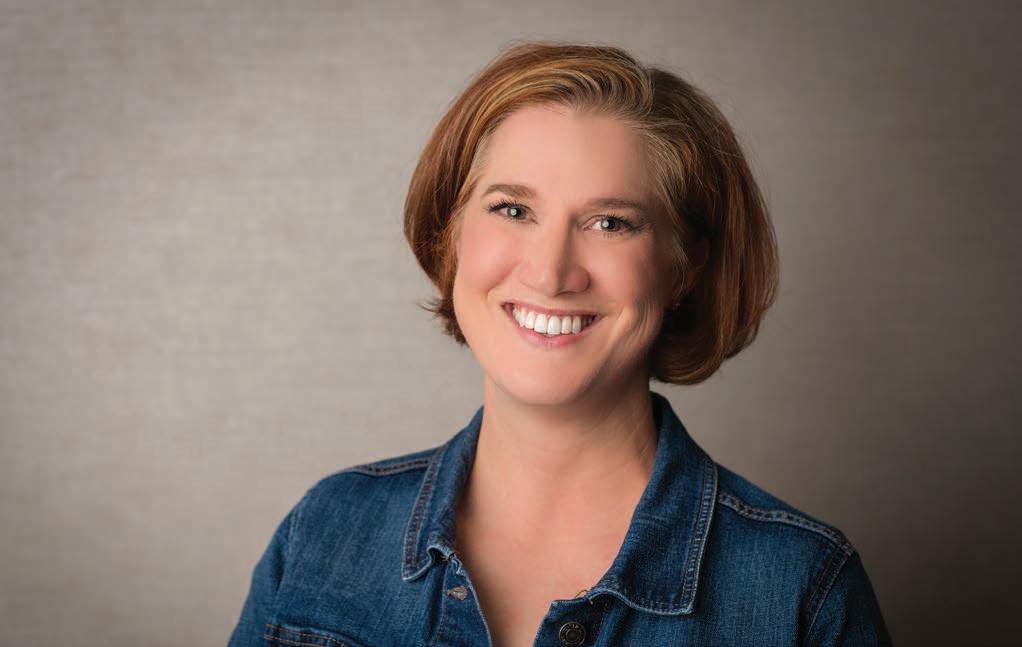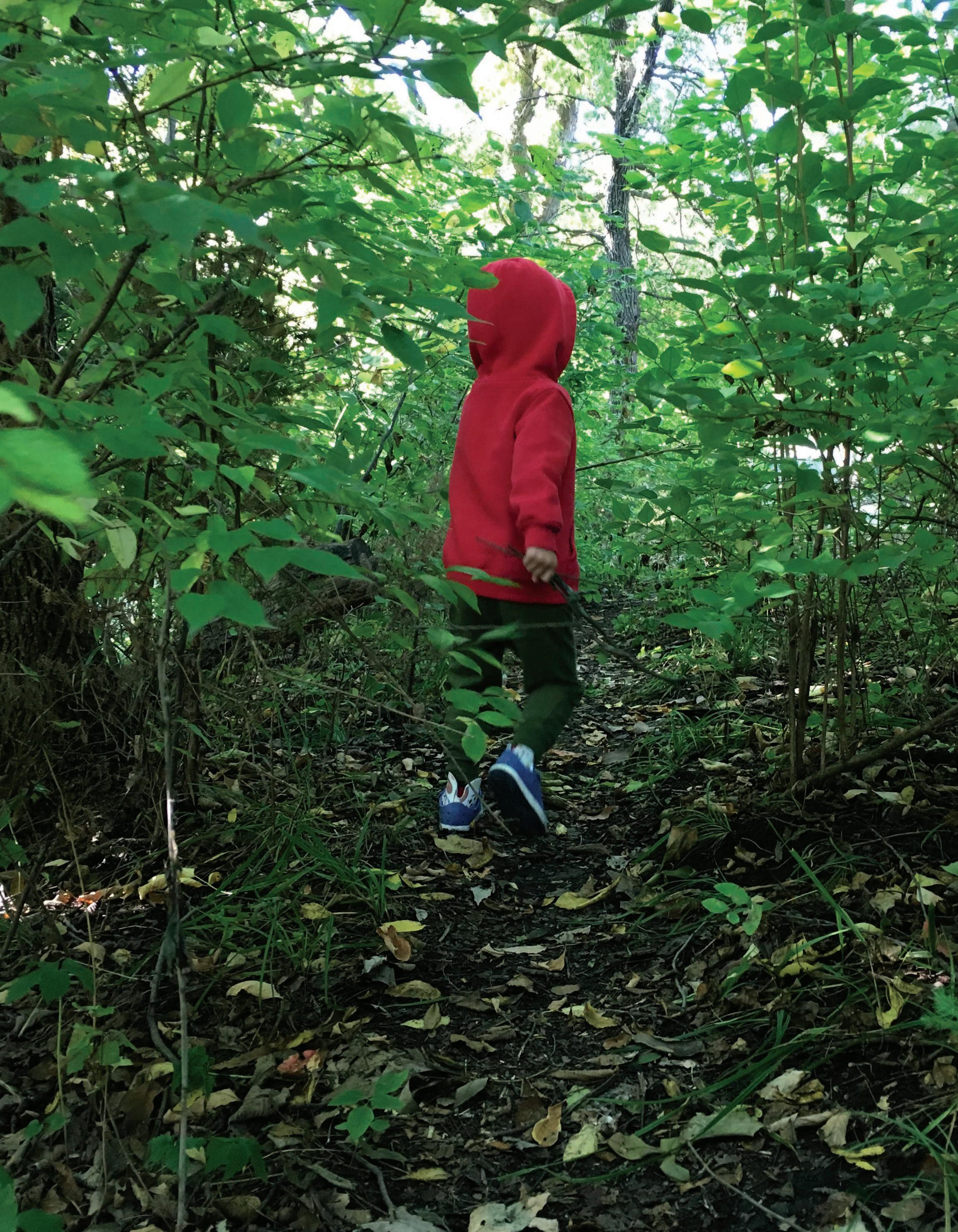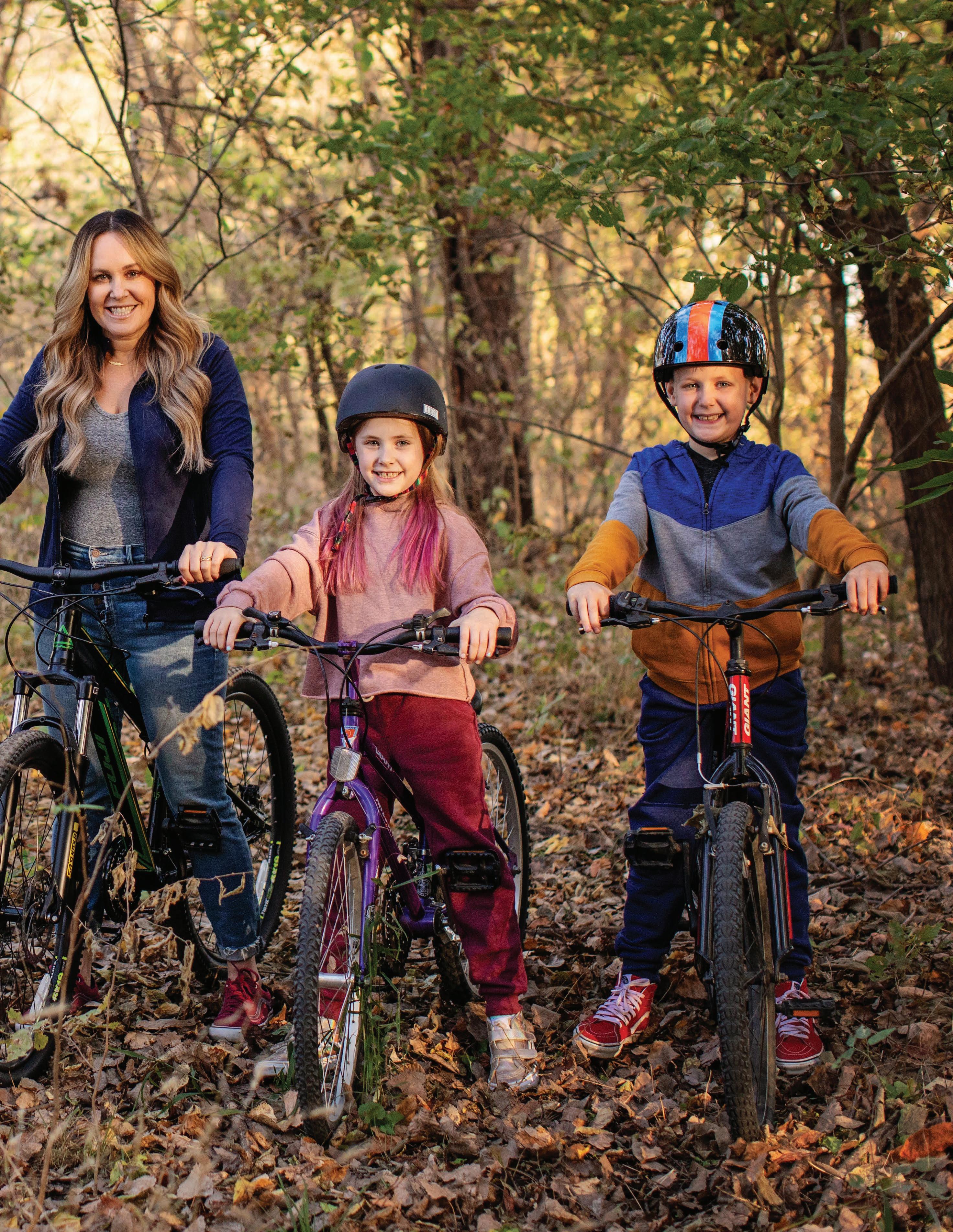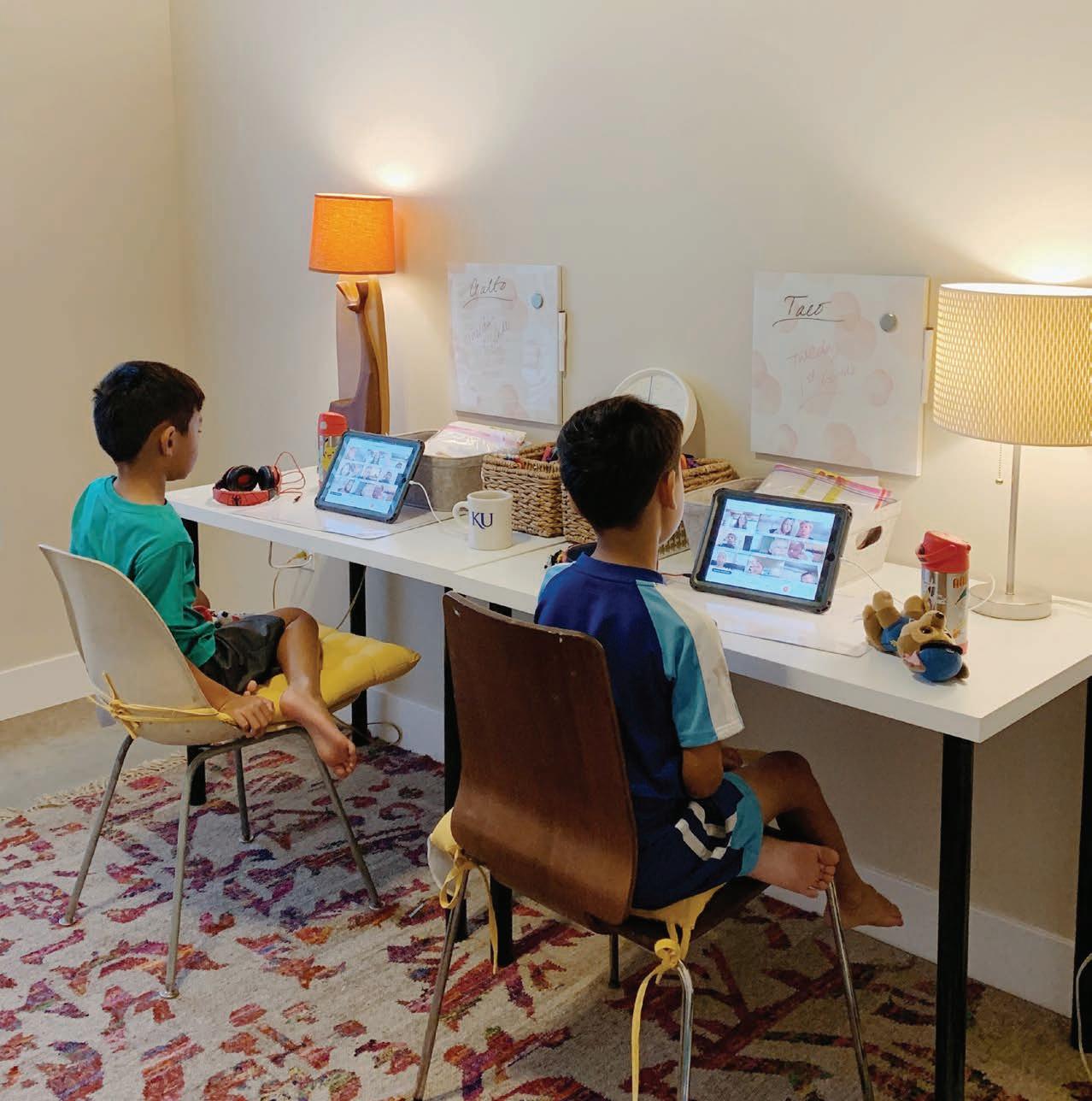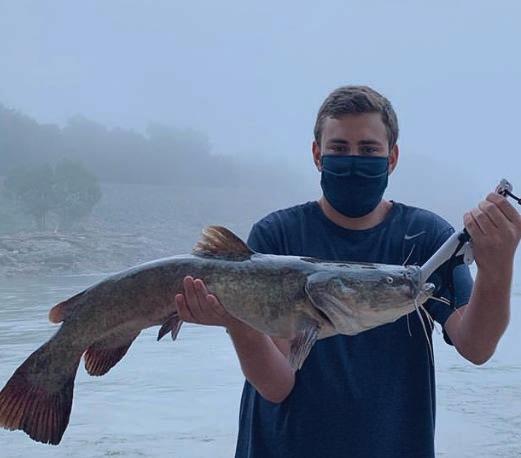
8 minute read
A Conversation with the President
Kelly Jones serves as president of the USD 497 school board. Jones is leading the Lawrence school system through unprecedented challenges while navigating passionate parents, an unpredictable pandemic, and omnipresent budget restraints...
LK: Lawrence schools are experiencing unparalleled challenges. What do you think is the single biggest challenge facing USD 497?
Advertisement
KJ: It’s not COVID-19; although, it feels like it. The coronavirus just further highlights disparities. The moral, ethical, outrageous, ongoing, oppressive (there’s so many applicable adjectives and all fail how bad this is), wide-reaching, and systemic challenge, which proceeds the current pandemic by forever, is the opportunity gap. The board’s primary work is undoing it. Here’s our ugly truth: Five-yearold children, with historically marginalized identities, walk into our school buildings, take a seat in their classrooms, and three grades later district data suggests we underserve them.
By the 8th grade, the data is indisputable. Year after year, there are proportionately more white students than students of color in advanced placement classes, in extracurricular activities, and in gifted and enrichment programming. Meanwhile, in-school and out-of-school suspension rates show disparities for Black, Indigenous, People of Color (BIPOC) scholars. And honest to goodness, this news is old. As board president, I am accountable to that fact. And along with my board colleagues, we endeavor to make sure that all USD 497 students have access to the key resources that lead to better outcomes in schools.
A close second to the opportunity gap in the “single biggest challenge” contest is the critical teacher shortage. Some Kansas districts are placing unqualified teachers in positions that they should not be because they can’t find candidates—particularly within special education. Other districts are seeing small teacher candidate pools just get smaller. Recent data coming out of the Kansas Department of Education reports significant increases in vacancies across Kansas. USD 497 HR department does an excellent job recruiting educators, but at some point (like during a pandemic) the shortage pushes up against Lawrence too.
LK: Making the choice to use online learning only for the first six weeks of the school year was a controversial decision. What science, expert(s), institutions, associations and/or research did you use to determine full-time virtual school for all children in the district was the best choice? How much impact did input from the community at-large or the vocal parent population against in-school learning have?
KJ: Starting the school year remote, was in part, a response to the majority of Lawrence teachers’ requests for a distance-learning start to the year. The six-week time frame allowed three cycles of incubation periods for coronavirus to pass before we revisited the decision of how to safely provide instruction. At the point of our second September board meeting, when the board reviewed data to decide whether to continue remote learning or move to a hybrid model, it put us at approximately the same amount of time after KU students returned to campus. If by the end of September and early October, we saw a spike in cases caused by the returning KU students, we’d know we needed to remain in a remote learning format. Currently, per the Douglas County Health Department Smart and Safe School Reopening Guidance (https://www.usd497.org/ Page/13116), LPS is in the yellow zone of the gating criteria, where it is recommend that schools operate a hybrid model of learning.
LK: How has the school board considered the social and emotional impact of children during COVID-19?
KJ: Some students are struggling, for sure. Teachers and district mental health staff are experts at assessing the social and emotional needs of their students. Even though they are remote, they continue to employ the tools within their training. Teachers take time each day to check in with students and in instances where they have significant concerns, they engage our district mental health staff. (Social work staff conduct porch visits where indicated.) To augment the district’s mental health team’s efforts, the district has also expanded our partnership with Bert Nash. This year, there will be more Bert Nash staff in our online communities and in our buildings than in prior years.
LK: Now that we are several weeks into the school year, what is the feedback from teachers in the district? Does it vary by school, grade level, or subject?
KJ: Across levels, teachers have shared that they experience new successes in remote learning every day. They describe growing more and more proficient in the model, which is heartening to hear. (Remote learning will be a component of education for some time.) The transition has required exceptional dedication from Lawrence educators—think 15hour days. I am in awe of what they have accomplished.
I am also hearing from teachers that responding to the COVID-19 context has taken an astonishing physical and emotional toil, which I routinely observe. Recently, the board asked that educators again pivot to an untested hybrid model of learning. This is a lot to ask and for some teachers. We crossed the line. It’s on the board to make this as right as we can and to increase workplace physical and emotional safety.
LK: Research shows low-income families and people of color are most likely to be negatively impacted by moving to a digital learning format. Besides offering hot spot WiFi and technology devices to all students, what is the district doing to ensure the success of children in those communities?
KJ: At our last board meeting, we voted to increase in-person learning, in part, to offset any potential negative
With regard to equity work, the board is fortunate. We benefit from the guidance and expertise of Dr. Lewis, Dr. Stubblefield, the Lawrence Education Association Executive Team, the district Equity Facilitators, and district and board equity committees. They elevate historically marginalized students, staff, and their families. The dedication is something to see. If you’re watching their work, you can’t stop yourself. You raise your hand high; you ask, How can I help?
This year, among several initiatives I’m excited about, district leaders are partnering with the Midwest and Plains Equity Center to collect data as part of an equity context analysis and strategic plan (ECAP). The plan will inform our equity and inclusion approach for several years into our future.
LK: Many families have either formed learning pods/cooperatives with 5-30 children or are paying for a spot in daycare-style learning groups. Despite their regular interaction, the numbers published by the health department reveal very few children in our county are testing positive for COVID-19. How does that knowledge inform your decision-making for the rest of the school year?
KJ: This is a BIG deal to me: It’s imperative that we minimally follow the guidelines of the Douglas County Health Department Smart and Safe School Reopening Guidance. In the board’s governance role, it’s also important that we critically analyze whether the health department’s public policy is responsive to new and emerging scientific discoveries. Thus far, it’s been my experience that we have a good partner in our local health department, no surprise.
I don’t know how many learning pods/cooperatives are in Lawrence? I haven’t had anyone share that they are part of one. I’d like to talk to folks who are doing this. If you’re reading this, please contact me for a Zoom meeting. I want to hear about what’s working and what’s not.
LK: What plans does the school board have to address the unique challenges faced by low-income families, families of color, and ESL (English as a Second Language) families during the pandemic?
KJ: The pandemic has negatively impacted us all, but it has not done so uniformly. Families with historically and currently marginalized identities are suffering worsening educational inequities, economic burdens, chronic stressors, and disparities in health outcomes. These things are exacerbated by school closings or limited access to in-person school. This is particularly true for those families for whom there is oppressive factors that intersect with socioeconomic struggle. The school board has to work to safely open schools when health and safety requirements can be met. Right now that means things like ensuring access to masks and mandating wearing them, accounting for low student-to-teacher ratios, requiring social distancing, flexible attendance (especially when an individual is sick), and hand washing. For periods of remote learning, the board has to close the digital divide and facilitate access to stable internet and provide necessary technology, which we have had success doing.
The district is fortunate to have an excellent Executive Director of Nutrition and Wellness, Paula Murrish. Under her guidance and in collaboration with community partners, we’ve been able to continually provide meals to Lawrence students, even during periods of remote learning. I am relieved that the USDA is still providing free breakfast and lunches for all students.
This academic year burdens students, teachers, staff, and administrators. My colleague on the board, Carole Cadue-Blackwood, often brings up emotional well-being during COVID. This is particularly important now. For all staff and students, it’s upon the board to allocate resources for evidence-based, culturally and linguistically appropriate, trauma-informed school-based mental health services.
LK: What impresses you about how teachers in our district have adjusted to online learning? What innovations and “out-of-the-box“ teaching have you seen? What needs improvement?
KJ: What’s most impressed me over the last 7 months is the extraordinary way in which teachers turn on a dime. They understand their craft and readily apply it to remote or in-person learning formats. A couple of times I’ve gotten to see how teachers organize content in their virtual classrooms. You can just tell that they know how students think. It’s also neat to see how teachers establish online classroom communities and engage with their students.
Routinely, educators share that there are aspects of remote learning they’ll use moving forward, even after the pandemic, and there will be an after. Good things are coming out of this educational crisis; maybe not enough to offset the misery and frustration…but silver linings have their place.
What needs improving: teacher morale. It’s low, they tell me. And I’m concerned. It keeps me up at night.
LK: During your time on the USD 497 school board, what has made you the most proud?
KJ: At the moment, COVID makes me weary of pointing to anything I am proud of. Humility seems optimal. Putting my personal public service aside, I’m proud of Lawrence students, educators, staff, and administrators. My gratitude for each of you is endless. LK

